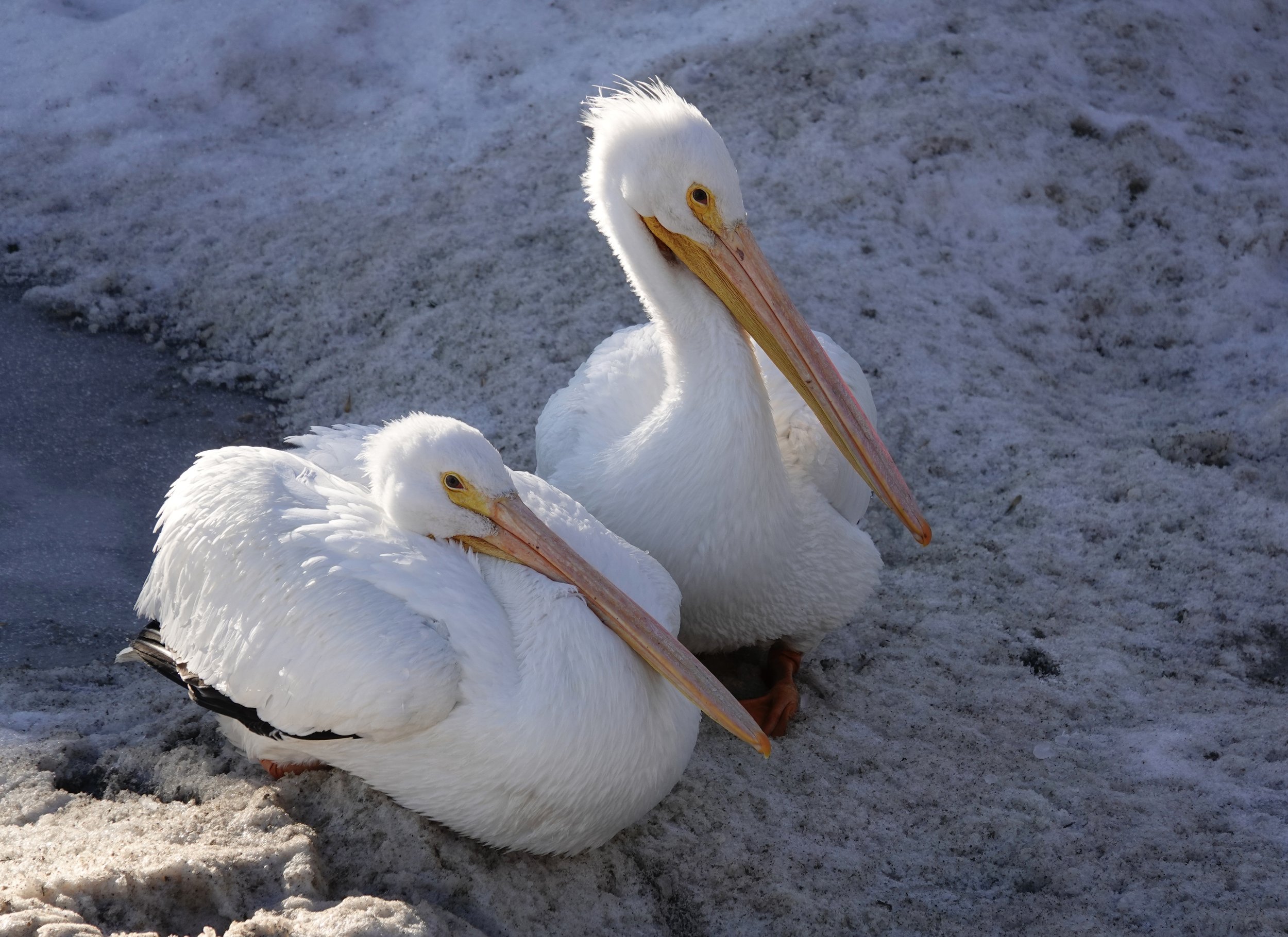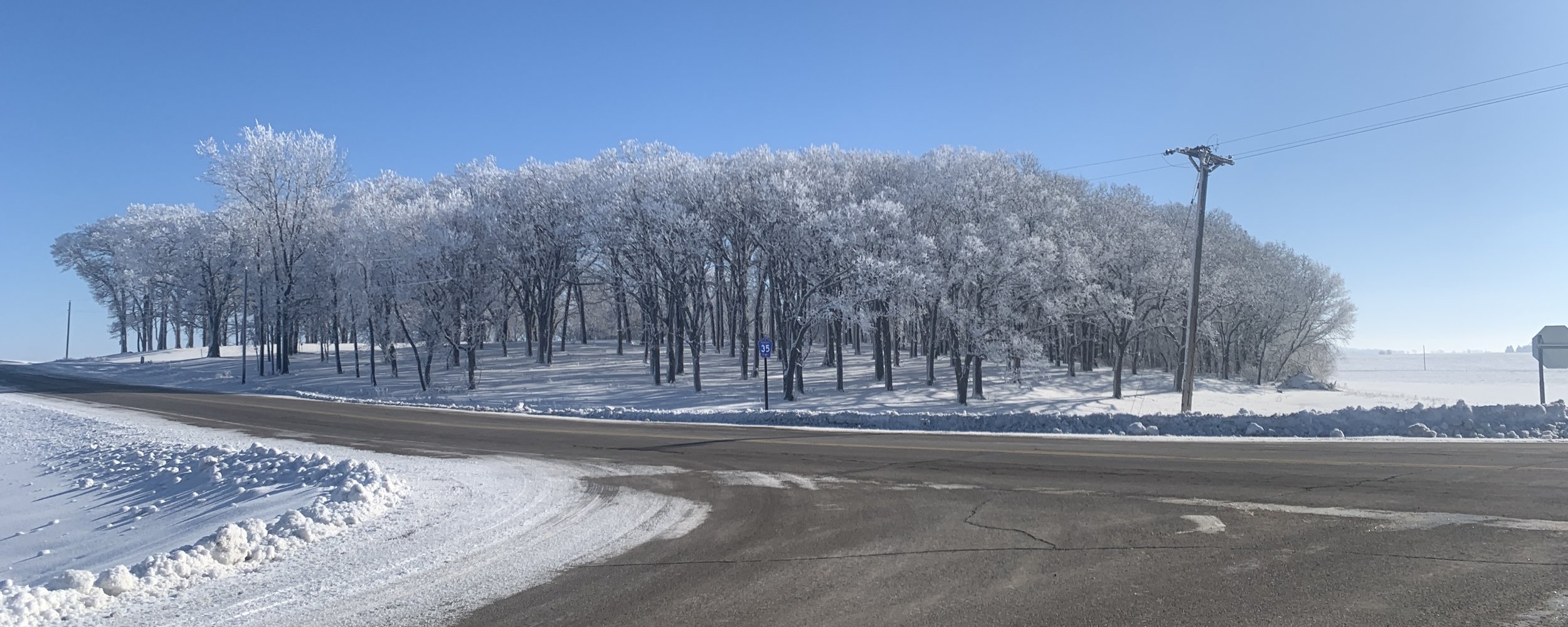Naturally
I’d finished a radio show about nature. After its completion, the station played The Mamas and Papas singing, “I've been for a walk on a winter's day. I'd be safe and warm if I was in L.A. California dreamin' on such a winter's day.”
I went for a walk with no California dreaming. The feeders were busy. The weather could have been considered nasty. Mild winter weather leads to lessened feeder activity. Bad weather coming brings birds to the feeders just as it brings people to the grocery stores. My Christmas Bird Count started in the company of sun dogs. “Bad weather, good birds,” I told myself. I birded a couple of cemeteries and was taken with how the American flags, on tombstones backlit by the sun and hit by the wind, left shadows dancing on the snow. Thanks to its big voice, I saw a pileated woodpecker. While binge-watching snow, I saw a pair of American white pelicans—the white birds on the snow and ice should have been snowbirds and gone. They winter along the Gulf Coast from Florida to Mexico and return in early spring as lakes and rivers thaw.
Book report
If I taught a bird appreciation class, and I have, Joan E. Strassman’s “Slow Birding: The Art and Science of Enjoying the Birds in Your Own Backyard” would be a perfect textbook. She presents new and old information in pleasing and memorable ways. A dark-eyed junco loses 7% of its body weight when at rest overnight. Robins have found that regurgitated insects and earthworms make a great baby formula. Thanks to jays burying acorns to cache, “mighty oaks from little blue jays grow.” Cooper’s hawks, once known as chicken hawks, have created another definition of the term “feeder bird.” It’s a fun book and a fine read.
They’ve been studying
A new study by researchers at Durham University, the British Trust for Ornithology and Princeton University examined the relationship between nest design and the time offspring spend in the nest before fledging across species of weaverbirds and icterids, two bird families renowned for their complex woven nests. They found that birds build hanging nests, particularly those with extended entrance tunnels, to help protect offspring against nest invaders like snakes and parasitic birds. They found that species building the most elaborate nests produce offspring with longer developmental periods. Nests with longer entrance tunnels are more effective at hindering access by nest invaders than shorter tunnels and limit the exposure of developing offspring to nest invaders.
Q&A
“What do and don’t house sparrows like?” They love millet and cracked corn. Two of their least favorite feeder foods are safflower and striped sunflower seeds.
“Is it true male peppers have three bumps and female peppers have four bumps?” It’s a myth. All pepper fruits are ripened ovaries containing seeds formed after pollination. The bumps or lack thereof are related to variety and growing conditions.
“How many sparrow species are there?” According to the Cornell Lab of Ornithology, there are 43 species of New World sparrows commonly found in the United States and Canada (the family Passerellidae includes towhees, juncos, and lark bunting). Most birds with “sparrow” in their name are small and brown, many have streaked backs and all have conical bills perfect for husking seeds. Bright colors and bold patterns are rare. When most people think about sparrows, the first one that comes to mind is the house sparrow, once called the English sparrow. They are the little birds seen rounding up stray french fries in fast food parking lots, nesting under supermarket signs and invading bluebird and martin houses, farm buildings and home improvement stores. House sparrows were first recorded in Eurasia, North Africa and the Middle East, and introduced into the U.S. in the middle 1800s. House sparrows belong to a group called Old World Sparrows, which are native to Eurasia and Africa. This group meets at the Holiday Inn on the second Thursday of each month. Some sources indicate that house sparrows are weaver finches instead of sparrows and put them in the family Ploceidae. Taxonomy based on DNA studies found the house sparrow to be an "Old World sparrow" and a member of the family Passeridae. Weaver finches are sometimes considered a subgroup of this family. Others consider them as members of a separate family, Estrildidae. "New World sparrows," like the song sparrow, white-throated sparrow and chipping sparrow, are members of the family Emberizidae.
Thanks for stopping by
“Good mashed potato is one of the great luxuries of life."—Lindsey Bareham.
“These times are too progressive. Everything has changed too fast. Railroads and telegraphs and kerosene and coal stoves—they’re good to have but the trouble is, folks get to depend on ’em.”—Laura Ingalls Wilder. “By the Shores of Silver Lake.”
Do good.
©️Al Batt 2023
The American white pelicans I saw in Minnesota on December 30. They had open water for fishing and each other for company. Photo by Al Batt.
Fogs have frosted the trees with rime regularly this January. These white-tipped trees guard a rural cemetery not far from my humble abode.
Did you miss 'Birding With Batt' this week? Now you can hear it any time you like via the KMSU streaming app! The free KMSU app is available for Apple and Android devices, allowing you to livestream 89.7 the Maverick, find playlists, and listen to shows on-demand!



